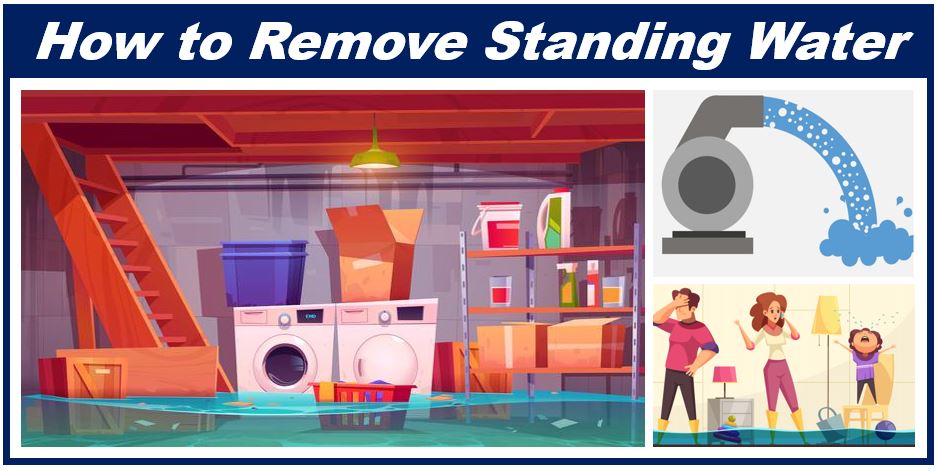Water can act as a friend as well as a foe. Water damage is a tedious and exhausting task. Water damages everything which comes in its way. It can damage your flooring, carpeting, walls, electrical appliances, and furniture.
Water damage can occur because of water leakage in the foundation, flood due to heavy rainfall, and leakage in the pipelines. But what should be done?

This blog explains the complete process of water removal from your premises. Follow these steps, and you see for yourself!
1. Ensure your safety
Safety is the priority in case of disasters. We all know water is a good conductor of electricity, and your little carelessness can cause your life. It would help if you did not move in the standing water at any point in time. If the water is in contact with any open electrical point or wire, you may get electrocuted.
Standing water contains debris, sewage, bio-hazards, branches, waste, and many other contaminants. These substances have a huge number of pathogens. They can cause several diseases and infection related to the skin, nose, and lungs.
If safety measures are not in place, then it can cost you your life. You must keep the following things in mind while entering a house containing standing water:
- You should wear an N-95 mask.
- You should wear full sleeves shirt, trousers and a heat shield.
- You should also wear long boots, eye goggles, and gloves.
2. Locate the source of water
The first step of water removal is to identify the source of water. The water damage can happen due to a leak in the water pipeline, flood in the area due to heavy rainfall, leaks in the foundation.
Suppose the standing water is there because of floodwater. You should wait for the situation to get regular and communicate with the weather forecasting board, and initiate the step forward according to the update.
If there is a leakage in the drain, you should call a professional water removal company that can tackle the situation and resolve the issue. If the water is leaking from a water pipeline, you should switch off the main water supply to stop more water from entering the premises.
With the advancement of technology, many devices are available in the market, stopping water from entering your house. You can install automatic shut off valves so that these valves close when water enters the house.
3. Pumping the water out
Once you have identified the water source, the next step is to pump the water out of the house. Depending upon the amount of water, you can opt for a convenient method to remove the water. If the water is significantly less, then you can use a bucket and remove the water manually. This method is very exhausting as it involves a lot of physical work.
If the standing water is there, you can employ a wet, electric or gas vacuum. The vacuum will and fasten up the process of water removal. Removing the water is essential in the first 24-48 hours as the increased humidity will attract mold and mildew.
Mold and Mildew damage the surface on which they grow. Mold is infectious and can cause many skin and lung-related infection. It can even cause asthma.
4. Drying the place
After water removal, you must dry the place immediately. After such damage, ensure proper ventilation all the time. Keep all the windows and fans open so that fresh air and sunlight can enter the place. Sunlight will kill all the microorganism, and air will not allow the odor to develop in the house.
In case of massive damage, you can install dehumidifiers in the place. You can also install extra fans. It will speed up the process significantly. If the site is not dried out completely, then mold can grow in the area. The growth of mold can damage the place ultimately.
Last Few Words
It would help if you kept in mind this whole process requires expert supervision and advice. You should hire a professional water removal company that can guide you step by step and tackle the process for you. Keep patient, and everything will be fine!
Interesting related article: “What is Personal Property Coverage?“

